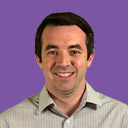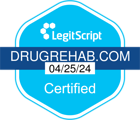Doctor shopping refers to soliciting multiple doctors under false pretenses in order to obtain prescription drugs to abuse, sell or distribute unlawfully.
People who doctor shop often deceive physicians into believing they legitimately need a medication, and they do not disclose that they are also filling prescriptions from other physicians. Additionally, some physicians may be aware of doctor shopping but write prescriptions anyway to profit from these patients.
Of all prescription drugs, opioids are the top target for doctor shoppers. In 2008, one out of every 143 patients in the United States received an opioid prescription from multiple physicians, a pattern that suggests doctor shopping behavior, according to the National Institute on Drug Abuse.
Although doctor shoppers made up a mere 0.7 percent of all American patients with opioid prescriptions that year, they purchased 2 percent of all opioid prescriptions and 4 percent of the total amount of opioid medications measured by weight.
A study by researchers at the Centers for Disease Control and Prevention examined unintentional prescription-drug overdose fatalities and found that 21.4 percent of the dead had engaged in doctor-shopping behavior before their death.
Doctor shopping is almost always an indication of illegal distribution or prescription drug abuse, especially in regard to opioids. It remains one of the biggest factors fueling the opioid and heroin addiction epidemic in the United States today.
The practice is prohibited in all 50 states and the District of Columbia. In efforts to curb doctor-shopping behavior, many state laws impose severe criminal penalties that can cause lifelong consequences for offenders. Additionally, nearly every state has implemented a prescription drug monitoring program to track patients who receive prescriptions for narcotics and the amount they receive.
Individuals seeking opioids are the most common type of doctor shoppers. A 2013 study cited by the National Institute on Drug Abuse examined opioid prescription records to identify doctor shoppers by their purchasing patterns.
After examining a dataset of more than 146 million opioid prescriptions dispensed by 76 percent of retail pharmacies in the United States, the researchers identified what they called an “extreme group” of 135,000 suspected doctor shoppers. On average, this group filled 32 opioid prescriptions from 10 different doctors over a 10-month period.
Among the group, those who paid for their prescriptions in cash visited an average of 15 prescribers in the same amount of time. The bulk of these likely doctor shoppers were between 26 and 35 years old.
As a whole, the extreme group purchased 11.1 million grams of opioids over 10 months. When averaged per patient, that equates to 109 milligrams of morphine per day for an entire year. The risk of overdose is high for individuals who use 100 milligrams of morphine or more per day.
A 2014 study by researchers with the University of North Carolina at Charlotte and Georgia Southern University aimed to shed light on physician deception by studying its prevalence, motives and risk factors. In a randomly sampled group of 2,349 young adults, 4 percent reported they have attempted to deceive a doctor to obtain a pharmaceutical.
About 50 percent of those who admitted to deceiving a physician said their motivation was to sell a portion of the prescription, though most also reported that they were at least partially motivated by their own substance abuse habits. Additionally, alcohol, marijuana and other pharmaceutical abuse was linked to further risks of engaging in this behavior.
Which Drugs Do Doctor Shoppers Target?
The U.S. Drug Enforcement Administration has identified five classes of drugs that are common targets for doctor shopping and other forms of drug diversion.
Drugs that are common targets for doctor shopping
| Drug Class |
Example Medications |
| Anabolic steroids |
Anadrol, Oxandrin, Dianabol, Durabolin, Depo-Testosterone |
| Central nervous system depressants |
Butisol Sodium, Mysoline, Seconal, Xanax, Klonopin |
| Hallucinogens |
Ketalar |
| Opioids |
OxyContin, Vicodin, Lomocot, Lazanda, Dilaudid, Demerol, Dolophine, Kadian, Opana, codeine, fentanyl |
| Stimulants |
Evekeo, Dexedrine, Desoxyn, Concerta |
Source: U.S. Drug Enforcement Administration
A 2010 study published in the journal Drug and Alcohol Dependence analyzed the largest electronic prescription drug monitoring program in the United States and found that opioid drugs were the most commonly sought among patients who visited multiple providers for the same drug.
Opioids accounted for 12.8 percent of all prescriptions involved in multiple provider episodes. Benzodiazepines were the next most sought after substance at 4.2 percent, followed by stimulants at 1.4 percent and anorectic weight-loss medications at 0.9 percent.
While it can be difficult for health care providers to recognize doctor shopping, there are steps they can take to prevent it. State programs that track prescriptions help doctors and pharmacists track possible cases of doctor shopping and other forms of drug diversion.
In addition, all 50 states and the District of Columbia have implemented laws that prohibit doctor shopping in some manner. Each state has a fraud statute adapted from the Uniform Narcotic Drug Act of 1939 or the Uniform Controlled Substances Act of 1970 that makes it illegal to obtain or attempt to obtain a narcotic by fraud, deceit or misrepresentation. These laws act as the frontline in prevention efforts against doctor shopping.
Prescription Drug Monitoring Programs
Prescription drug monitoring programs (PDMPs) require doctors and pharmacists to record each prescription filled in a government database, allowing health care professionals to identify individuals who are engaging in doctor-shopping behaviors.
As of May 2016, every state except Missouri had an operational PDMP in place. The District of Columbia has enacted legislation to create a PDMP but does not have an operational program. Numerous studies cited by the U.S. National Library of Medicine found that PDMPs are effective for deterring doctor-shopping behavior and decreasing the prevalence of doctor shopping.
Pharmacists
Pharmacists hold a large amount of responsibility in preventing doctor shoppers from attaining controlled substances. By watching for fake prescriptions, altered prescriptions and patients with several prescriptions from multiple physicians, pharmacists have the ability to recognize individuals who may be doctor shoppers. Additionally, many pharmacies have hotlines to alert other pharmacies in the area when a fraudulent prescription has been detected.
Rehab Treatment for Doctor Shoppers
Doctor shopping is almost always an indication of a substance use disorder. Individuals engaging in these behaviors may be mentally or physically addicted to prescription medications, and substance abuse treatment may be the only way to help these individuals reach recovery.
If you or someone you know is defrauding health care professionals in order to obtain a controlled substance, seek treatment to start down the path to a healthy and sober life.
Medical Disclaimer: DrugRehab.com aims to improve the quality of life for people struggling with a substance use or mental health disorder with fact-based content about the nature of behavioral health conditions, treatment options and their related outcomes. We publish material that is researched, cited, edited and reviewed by licensed medical professionals. The information we provide is not intended to be a substitute for professional medical advice, diagnosis or treatment. It should not be used in place of the advice of your physician or other qualified healthcare provider.
 Addiction
Addiction
 Treatment
Treatment
 Faith & Religion
Faith & Religion
 Active Recovery
Active Recovery
 Our Community
Our Community




